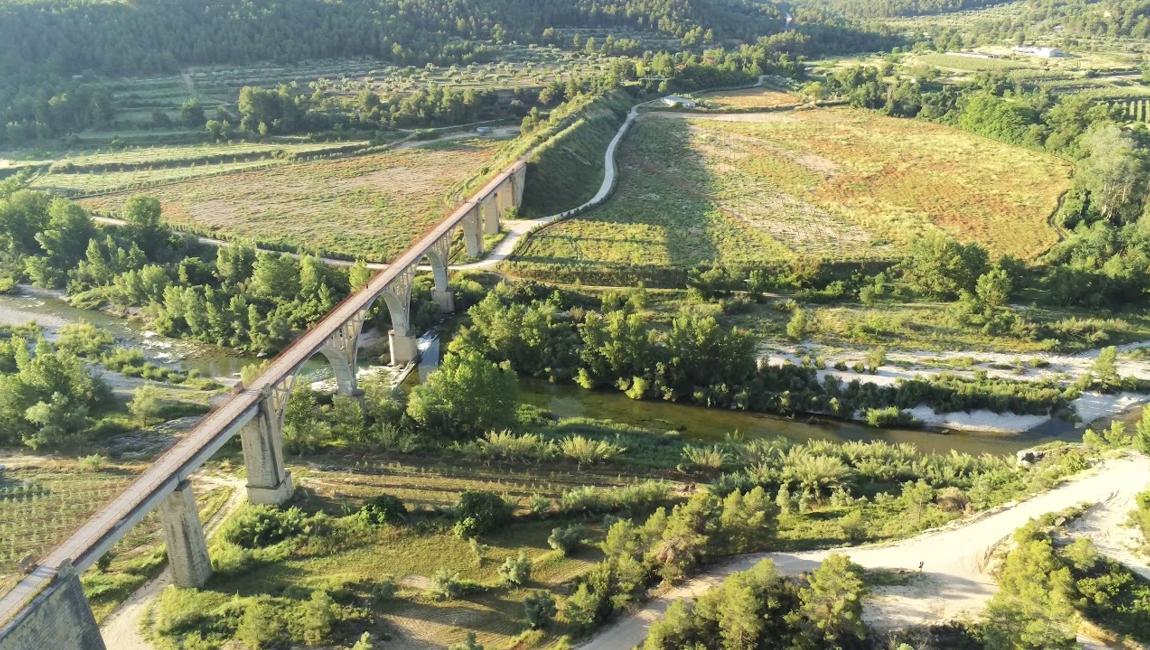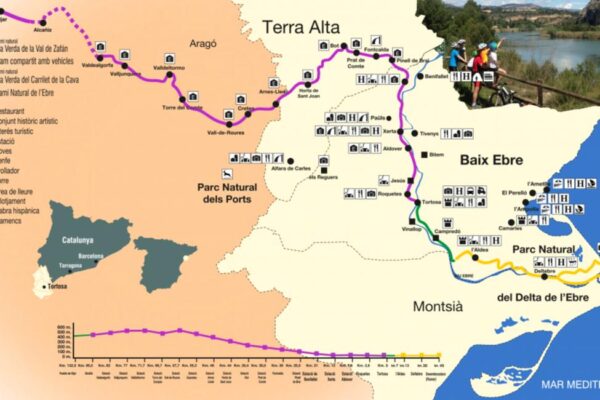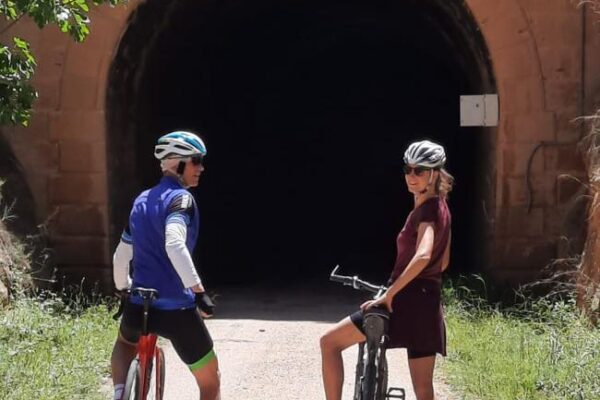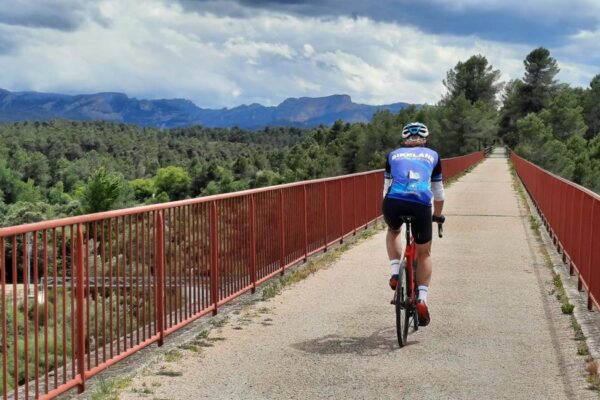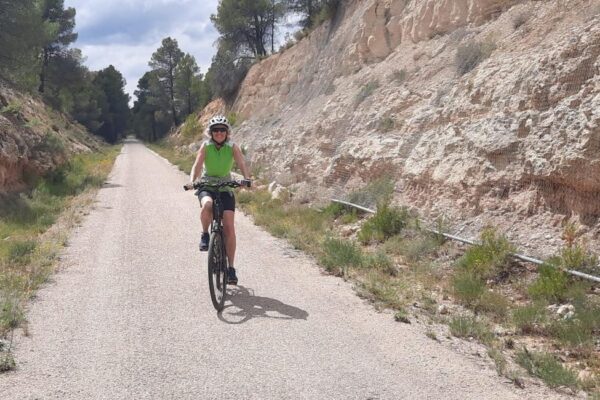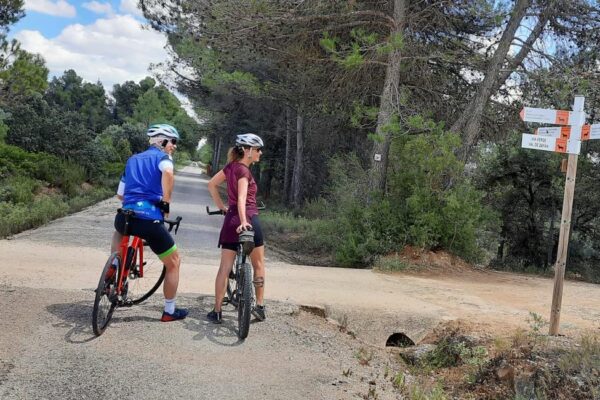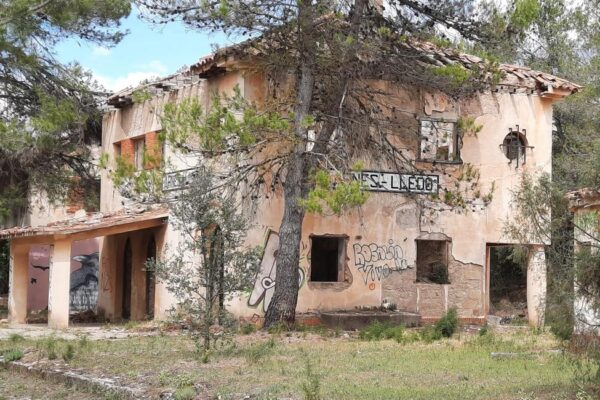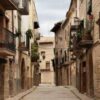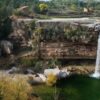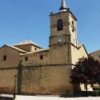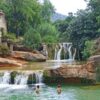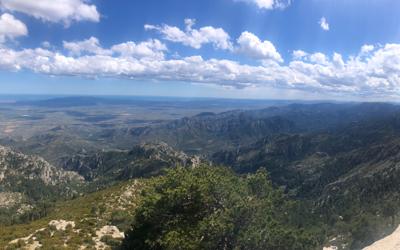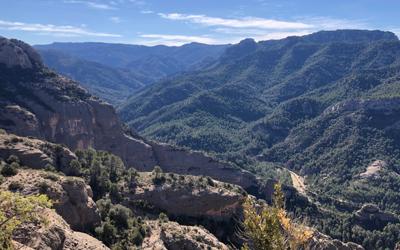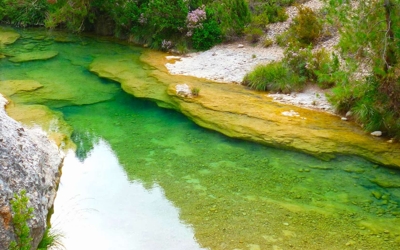Around Naserena, you cannot only hike and climb beautifully, but also enjoy cycling. The traffic roads are generally not busy and have a fine road surface. The number of routes for all-terrain bikes is surprisingly big. But the number one cycling attraction of the Matarraña is the so-called Vía Verde (Greenway), which roughly runs 100 km along an old railway track between Alcañiz and Tortosa, passing right by Naserena. It is a route that links a series of old railway stations (often outside of the villages to which they are named), goes through 46 tunnels, crosses 14 viaducts – the most spectacular lying right around the corner of Naserena -, and passes various attractive natural swimming pools.
If you do the route from West (Alcañiz) to East (Tortosa) it is largely downhill, the other way around requires a bit more cycling (climbing) experience. You can choose to extend the route beyond Tortosa, all the way to the Mediterranean. From Tortosa, you can take the cycle path along the river Ebro until you arrive at the sea. The old railway line no longer runs there, but the route is too beautiful to stop already. By then the mountains have given way to the Ebro plain and rice fields ending up at one of Europe’s most important wetlands (Parc Natural del Delta de l’Ebre). Here you find extensive marshes and canals where one can spot the sea and migratory birds such as flamingos, ibis, and ospreys. The final destination could be Ràpita, a pleasant Catalan seaside and fishing town with extensive beaches and a promenade with numerous terraces. But let’s turn to the part of the railway route we did.
In May 2024 my parents and I (Anna) tried a few stretches of this beautiful Via Verde starting in Torre del Compte (around 10 km from Naserena). We left the small town whose high tower overlooks the Matarraña river and the fields around La Fresneda, and reached the old Torre del Compte train station via a steep downhill tarmac road. We chose to directly cross the river via the 300-meter-long viaduct in the direction of Valjunquera (see photo). The kind spring temperatures and the views made for a really pleasant first encounter with the Vía Verde.
Except for a few potholes, the road surface was good, but the fine grit made for a permanent ticking; it is perhaps also advisable to use thick tires as this provides a better grip on the road surface. After 5 kilometers and our first tunnel experience (we forgot to take our headlights!) we turned around and immediately noticed the difference: it was now very evenly but certainly going downhill. We rode past Torre del Compte, via Valderrobres to Cretas, all of them being old and well-preserved little towns overlooking the spectacular scenery of the Els Ports Natural Park.
An attractive feature of the whole railway route is that you keep crossing other traffic roads where you can turn off to a village or town, or even a swimming place. After Cretas we called it a day and returned to Torre del Compte.
After this first exploratory trip, we chose to start our second bike ride with a run along the provincial road from Valderrobres, the town where we had settled by then, to Cretas. We did not choose the Valderrobres station to enter the Via Verde because of its relative inaccessibility, but picked up our railway trip at the Cretas railway station. The 15 km stretch towards Horta de San Juan (where Pablo Picasso worked for a while) crosses a kind of plateau with constant mountain views.
It can be nicely interrupted at Lledó to swim in the town’s beautiful pools which are carved in the bed of the Matarraña. Unfortunately, we didn’t bring our swimwear, so we chose to ride back to Valderrobres via the ‘regular’ motorway. Yet we are sure that the Vía Verde has other beautiful stages in store for us!
Practical information
It is advised to bring a headlight to have adequate visibility in the tunnels!
Via Verde Alcaniz – Tortosa & Bike Rental
Via Verde Alcaniz – Tortosa Wikilog
More cycling routes in the Matarraña
Via Verdes in the rest of Spain
Map of via Verde

